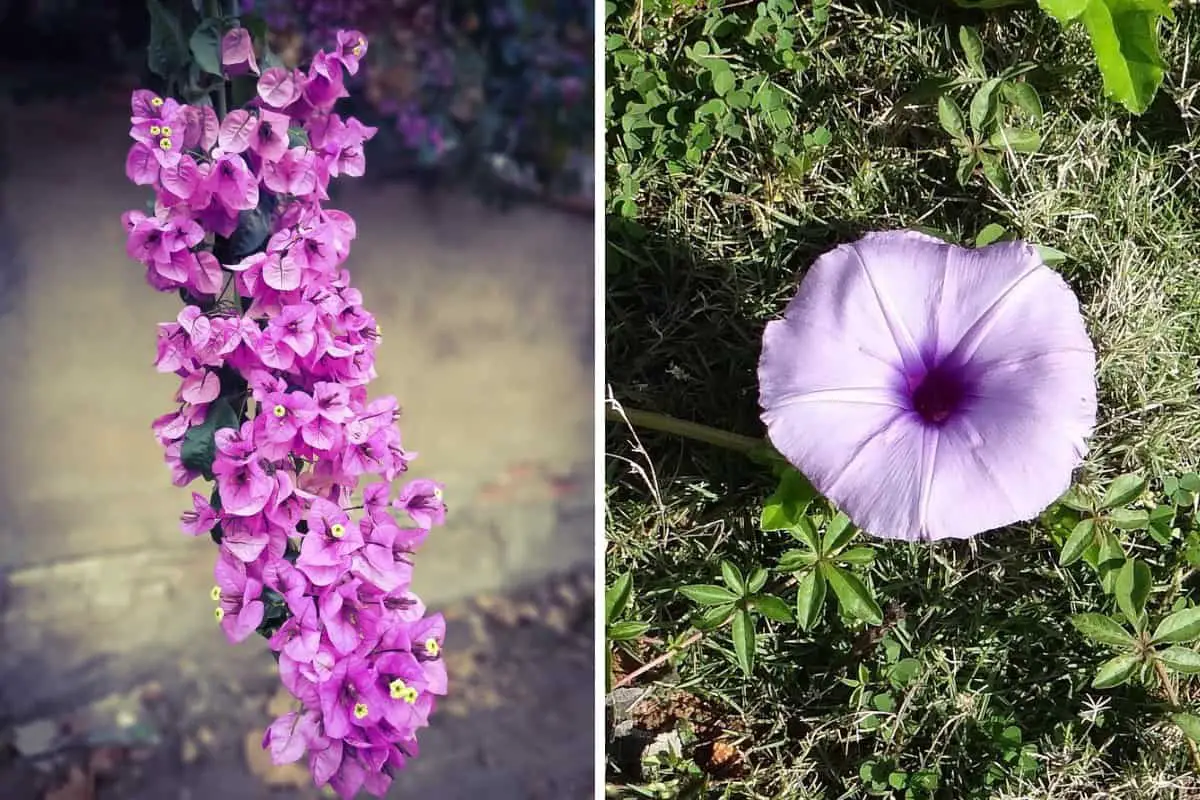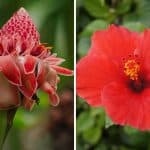One of the things that makes Hawaii a true paradise is its abundance of lovely colored flowers. You’ll find these beautiful blossoms throughout the state, and if you’re wondering if there are purple flowers in Hawaii, the answer is a resounding yes. Surprisingly, most of these blooms are not native to the islands but have been introduced over time.
11 Purple Flowers in Hawaii
In this article, we will show you some of the blossoms that paint the Hawaiian landscape in violet and lavender shades, captivating both residents and visitors.
1. Bougainvillea
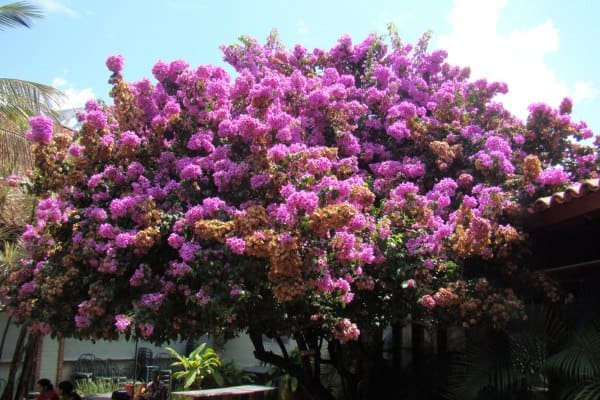
Scientific name: Bougainvillea spp.
One of the beautiful plants you’ll find in Hawaii is the bougainvillea. This plant produces blossoms that are encircled by three colorful flowering bracts that resemble petals and range in shape from triangular to egg-shaped. The bracts of this species come in various colors, including pink, red, orange, yellow, purple, and white, which adds to its overall visual appeal.
These plants are commonly used in gardens as ornamental plants due to their ability to grow as woody vines that can reach heights of up to 40 feet.
2. Greenleaf Ticktrefoil

Scientific name: Desmodium intortum
Hawaii’s islands are among the many places in the world where the plant known as greenleaf ticktrefoil has been introduced. One of its main applications is in agriculture, where it effectively repels grass moths and other harmful weeds, thus serving as an important tool for pest management.
However, its breathtaking flowers will likely catch your attention to this plant. These pea-shaped blossoms range in color from purple to lilac.
3. Littlebell
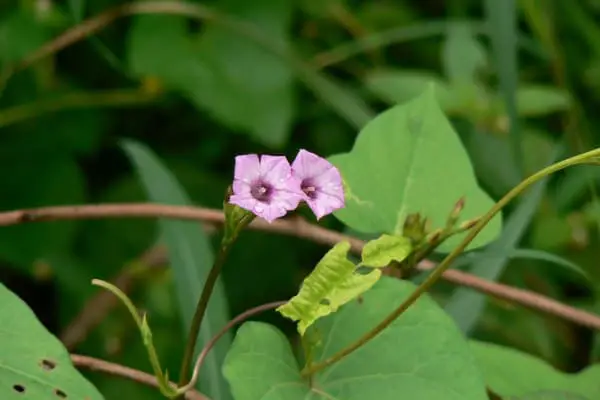
Scientific name: Ipomoea triloba
In Hawaii, you can spot the littlebell, a flowering weed that graces grasslands and disturbed areas such as old pastures, fields, and roadsides with its vibrant purple blossoms. The flowers of this plant have a bell-shaped appearance and typically consist of five lobes, which can grow individually or in clusters.
This species originated in the tropical Americas but has since spread to warm areas around the world. Their fast growth rate has led to them being commonly regarded as weeds.
4. Cure For All
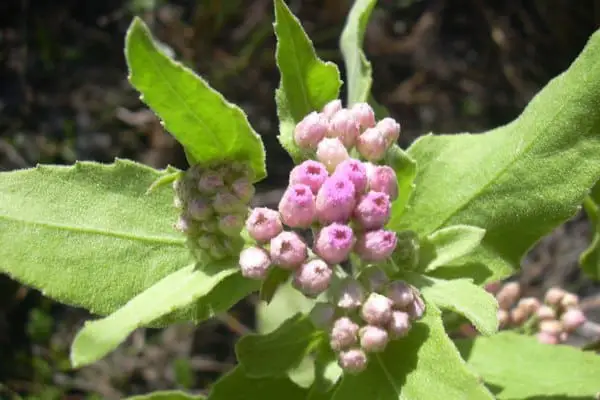
Scientific name: Pluchea carolinensis
The name “Cure For All” suggests that this species is frequently utilized as a medicinal plant, particularly for treating sore throats and sinus problems. In addition to its medicinal properties, the plant is also known for its clusters of pinkish-lavender blossoms that grow together at a single terminal.
In Hawaii, these plants can become weedy and are known to thrive in a range of conditions, from dry to moist, sunny, open areas that have been disturbed.
5. Mile A Minute Vine

Scientific name: Ipomoea cairica
The introduction of the mile a minute vine to Hawaii can be traced back to the ancient Polynesians, who brought the seeds to the islands as a valuable food source since the tubers of this plant are edible. Its flowers are funnel-shaped, measuring 3.5 inches in diameter, and display a range of colors from purple to white, with a dark purple center. These plants rapidly grow and are frequently found in sunny, open, disturbed, often dry, and rocky areas.
6. Princess-flower

Scientific name: Tibouchina urvilleana
The plant is named Princess Flower due to its royal purple blossoms, which have a captivating dark blue sheen that easily grabs the attention of many. This shrub can reach a height of 15 feet, and because it’s native to Brazil, it does best in locations that receive a lot of sunlight. But in Hawaii, this plant is seen as a weed that could upset the natural balance of the state’s forests and native flora.
7. Bengal Trumpet
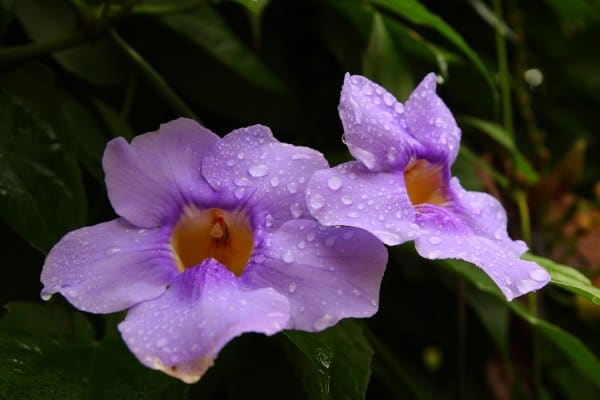
Scientific name: Thunbergia grandiflora
If you’ve seen blossoms that are violet, have five ruffled lobes, and have a yellow throat, then you’ve probably encountered bengal trumpet flowers. This species is cultivated as a houseplant in certain countries and has been recognized with the Royal Horticultural Society’s Award of Garden Merit. However, in certain places such as Hawaii, it poses a significant problem as it spreads rapidly and takes over trees and shrubs.
8. Morning-glory
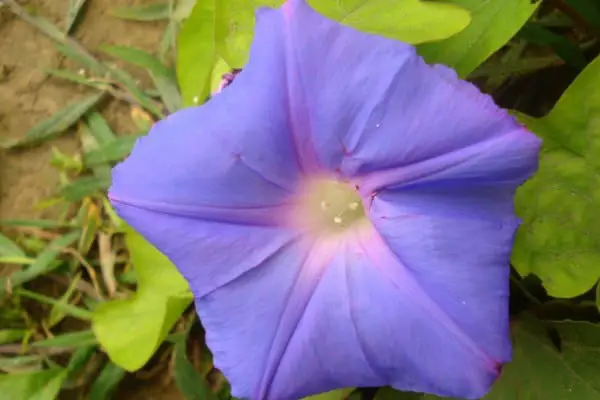
Scientific name: Ipomoea indica
The morning glory is a plant that has been honored with the Royal Horticultural Society’s Award of Garden Merit. It’s highly regarded for its gorgeous flowers, making it a popular choice among gardeners for its ornamental value.
They are widespread in tropical environments and favor areas with disturbed forests, secondary woodland, forest edges, and even along roadsides. Because of its tendency to climb over trees and other native plants, it’s classified as a weed in the state.
9. Coleus

Scientific name: Solenostemon scutellarioides
Coleus, also called the painted nettle, is a plant species that’s native to southeast Asia all the way to Australia. It has now made its way to Hawaii, where it’s a common garden plant. This plant stands out with its vibrant and diverse range of leaf colors, including red, pink, orange, yellow, lime green, purple, brown, or creamy white. In addition, the plant produces purplish flowers that grow in spikes at the top.
10. Ageratum
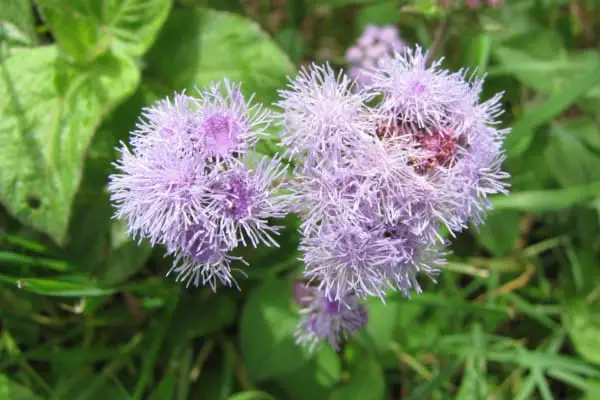
Scientific name: Ageratum spp.
The bluemink and the whiteweed are the two different species of Ageratum that can be discovered in this state. However, the bluemink species typically display a Lavender to purplish-blue coloration, while the other species lean towards a more whitish hue.
Their flowers are produced in clusters and may have the appearance of being fuzzy, tiny, and lacking rays. These plants are highly toxic and can grow in the wild as weeds in disturbed regions and along the sides of roadways in lower to middle elevations.
11. Blue Ginger
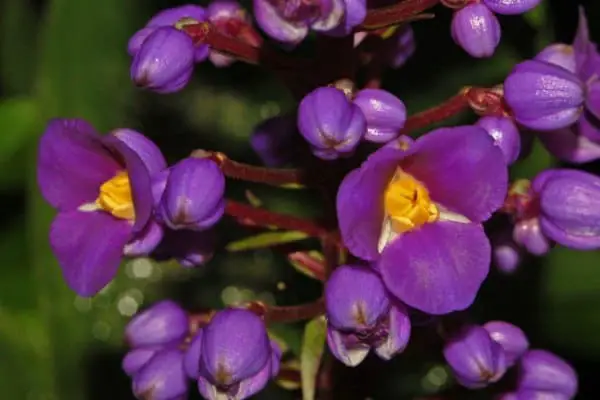
Scientific name: Dichorisandra thyrsiflora
Contrary to its name, blue ginger is actually from the spiderwort family and not from the ginger family. The flowers of this plant often captivate many observers with their sapphire blue to blue-purple color, growing in clusters at the end of each stem.
The blossoms are approximately 1/2 inch in diameter, while the length of the flower terminal can reach up to 8 inches. Moist, shady areas like along shady roadsides and in abandoned gardens are where they thrive.
